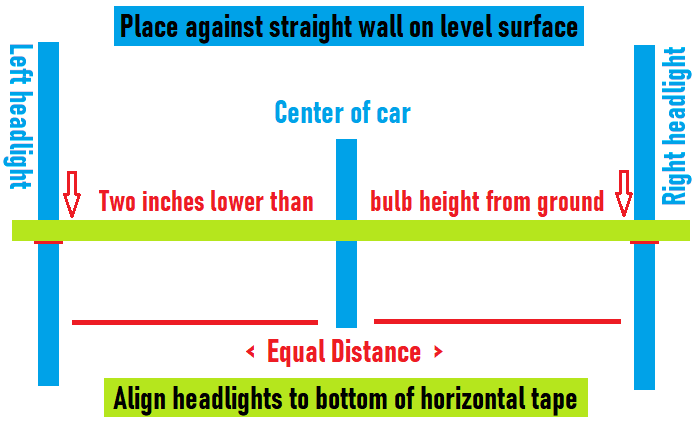Headlights dimmed for safety
Stop putting blinding LEDs on cars, trucks and SUVs
By: Evan Lee
Nov. 12, 2023 |
Opinion

Overly bright and misaligned LED headlights are more than just annoying, they can be deadly.
Imagine: it’s after dark and you’re driving through town. There’s nothing in front of you as you pass through an intersection, but in the opposite lane glares a bright white light.
It’s more intense than any other set of headlights you pass and soon engulfs your entire left field of view. In one moment, the road in front of you is completely clear. Flash forward to the next and a jaywalker nearly slams into your hood.
Via Reddit.com | This video is muted
In those few seconds of blindness caused by overly bright and poorly aligned LED headlights, somebody’s life could have been lost.
That isn’t my video by the way, I saw it posted on Reddit a while ago. But, working into the night again now that daylight savings is over brought it back on my mind.
With clocks set back to standard time and days just getting shorter in general, we’re going to be spending a lot more time driving in the dark. And that means greater risk of encountering similar LED hazards.
These lights are a popular aftermarket modification for older cars, and in many newer cars they already come pre-installed from the factory. But while they may certainly increase night-time visibility for their owners, the same cannot be said for other drivers.
If you drive a smaller car like me, then taller trucks and SUVs like the one from the video are especially problematic.
Here, its luminance is beamed directly into the other driver’s eyeline due to the higher placement of the truck’s headlamp housing and likely an improper installation from a DIY job.

The jaywalker is only visible after the LEDs pass
But even in regular cars with stock LEDs from the factory, the difference in intensity and color is noticeable, often distractingly so, compared to traditional halogen or sealed beam headlights.
Needless to say, many drivers aren’t thrilled with them. A 2016 petition by the Softlights Foundation calling to outright “ban blinding LED headlights” has garnered over 50,000 signatures.
The foundation argues that a federal law regulating headlight standards, FMVSS-108, was written well before LEDs came into common use and is therefore not applicable to them.
The 1967 law only understands headlight illumination to be spherical,
with energy dispersed uniformly in all directions. That’s how incandescent and halogen lights work. But modern LEDs are flat surface
light emitters, projecting most of their energy in one direction from the center instead.
This is why they are so blinding when directed at other drivers, who must bare the brunt of their energy.
Factory installed headlights should be positioned in a way that mitigates this effect, aimed low enough that the beam will not make eye contact with those in the opposite lane. But their positioning may come out of balance over time or even temporarily shift if the vehicle is carrying a heavy load.
Such misalignments are the biggest contributor to LED glare, yet the issue is not always checked for during vehicle inspections.
Research by NBC earlier this year found that of the 15 states requiring an annual inspection, only 10 check headlight alignment. Furthermore, federal law does not require manufacturers to check alignment once headlamps are installed in vehicles.
And, of course, aftermarket installations may never have been positioned correctly from the start.
Regulators are finally recognizing how unsafe LED headlights can be when misdirected at other drivers. An amendment to FMVSS-108 was approved last year, allowing automakers to install “adaptive driving beam headlight systems” in their vehicles.
This technology can detect oncoming traffic and dim LEDs in the direction of other drivers. At the same time, more light can be directed at empty areas to increase visibility.

Adaptive headlight technology, courtesy Audi
This is a step in the right direction against glare, however there is still not a single new vehicle on US roads that uses these adaptive lights.
Automakers blame stringent testing requirements by the National Highway Traffic Safety Administration for the delay, despite the fact that the technology has already been proven successful in Europe since Audi first introduced it in 2012.
Hopefully the standards set by the NHTSA will soon be met for future US cars, but the problem of misdirected lights on current ones still persists.
The law should expand to better enforce proper headlight alignment and regulate aftermarket LED installations.
There is no good reason why automakers should be allowed to let vehicles leave the factory floor without verifying that lights are properly aligned. Nor should states that do require annual vehicle inspections neglect to check if alignment has swayed.
As far as aftermarket LEDs go, which pose the most glaring risk to driver and pedestrian safety, some are already illegal. Anything that shines brighter than 3,000 lumens, the current limit for headlight intensity, will not pass inspection. But what’s to stop drivers from simply swapping out these LEDs for the original bulbs right beforehand?
The obvious solution is to simply issue more warnings and bigger fines to vehicle owners found with overly bright and misaligned headlights. That’d be great for grossly negligent people like the truck driver from the video. But, I don’t think everyone deserves to be outright ticketed.
Most people with out-of-place lights probably have no idea they could be blinding other drivers and would be happy to fix the issue if they knew about it.
A less punishing alternative is to spread more awareness about headlight misalignment. Something like a public service announcement run on TV, radio and the internet could highlight the issue, for example.
LEDs also aren’t the only lights that can go out of alignment, they’re just much worse when misdirected. But halogen bulbs are prone to move out of position too. So, it’s a good thing to check up on in general and something you can do relatively easily at home.
Start by parking your vehicle on a level surface faced straight toward a flat wall or garage door.
Then, with tape, place a vertical line on the wall in front of the center of the car - align it to the badge emblem or licence plate. Place two more vertical strips of tape in front of each headlight, equally distanced from the center line.
Now, find the low-beam bulb on either headlamp and measure from its center to the ground - it should be the same for both bulbs. Mark that measurement on the two lines of tape in front of each headlight, then make second marks two inches below these.
Use the second, lower marks to line up a horizontal strip of tape across the three vertical ones, placing the bottom of the tape against the top of the lower marks.
Your tape markings should look something like this:

Yeah yeah, it’s an MS Paint diagram... Fight me.
Now, reverse the car back about 25 feet and check the alignment of each individual light against the horizontal strip of tape. Block one light so that only the other shines against the wall.
The tops of both lights should line up with the bottom of the horizontal tape. If either of them do not, then they are misaligned and should be adjusted. You can either follow a tutorial to do that yourself or bring the car to repair shop. Non-blinded drivers will thank you.

As for me, I won’t be blinding anyone in my little old hatchback.
Halogens for the win.



